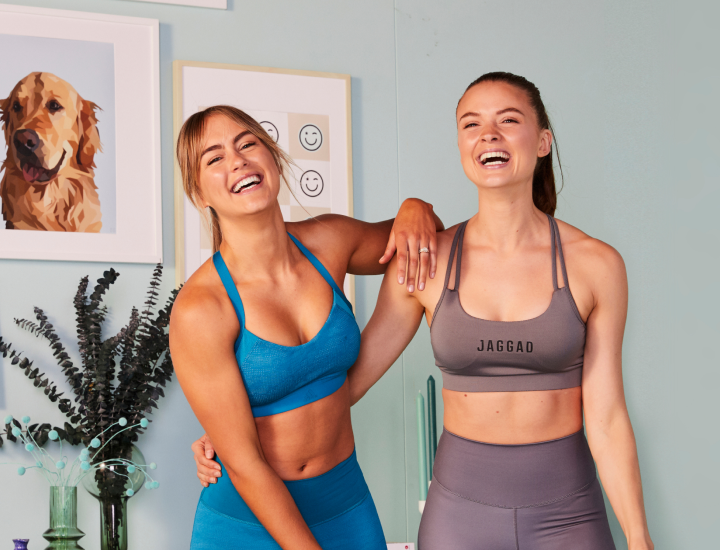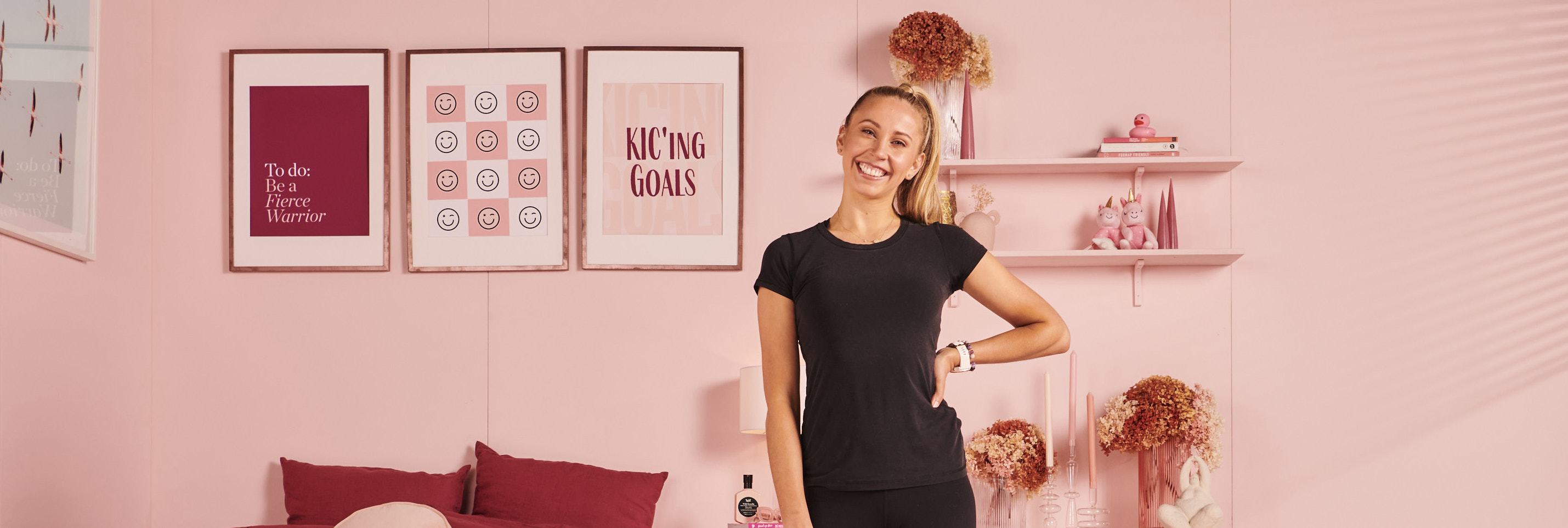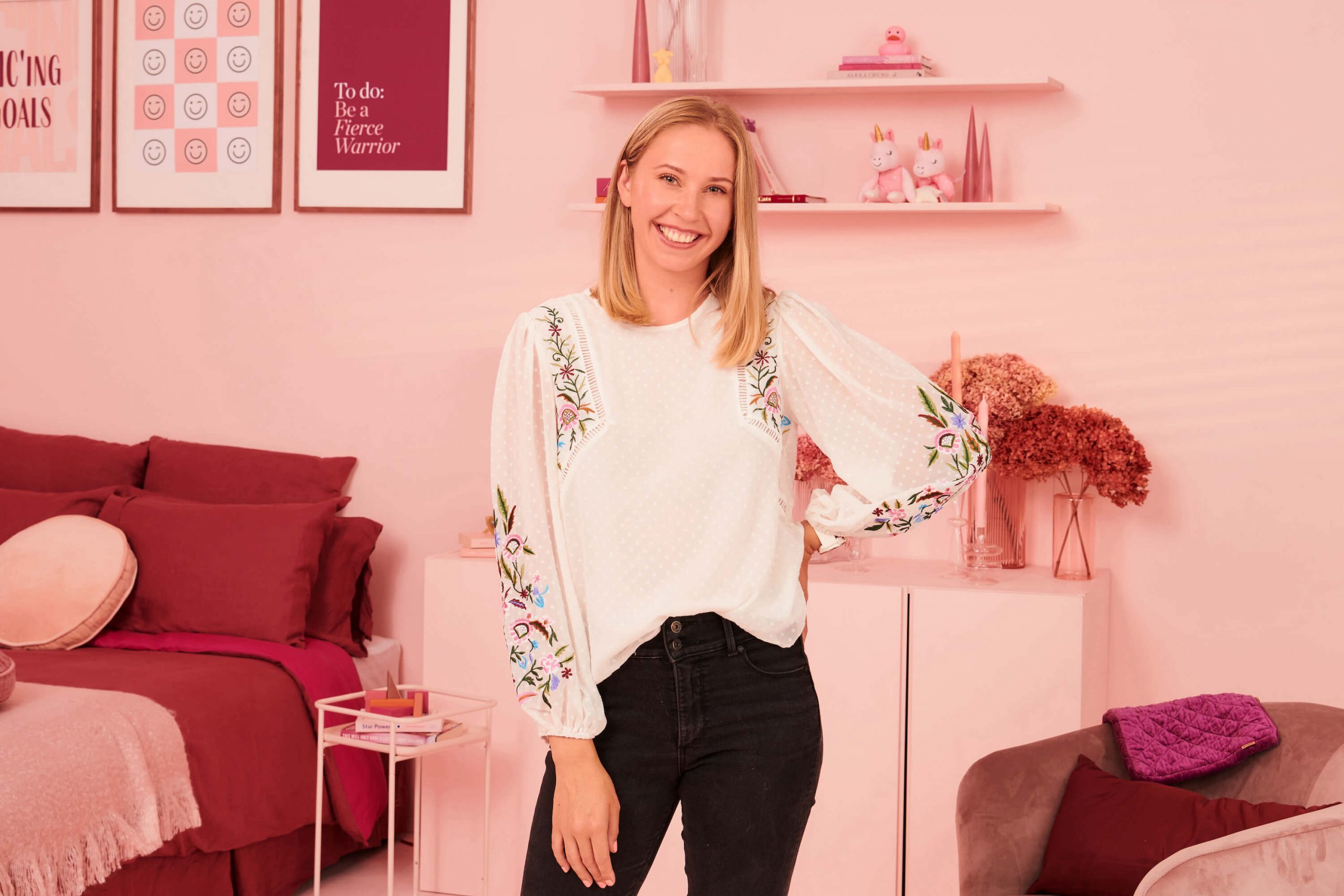Transitioning from Postpartum Specific Exercise to Regular Exercise
We chatted with our incredible Physio & Women’s Health Educator Ash Ormond (nee Mason) to get all the details on how you can safely transition from the KICBUMP Postnatal Pilates Program to our regular KIC workouts.
First things first…
The first thing Ash said was to make sure that you’ve taken the time to properly complete the KICBUMP Postnatal Program, even if you were KIC’ing it regularly before or during pregnancy, as it has been specifically designed to get you back into regular KIC workouts. The postnatal program focuses on re-training your core, improving your pelvic floor as well as gently rebuilding your overall strength.
Alongside this, before re-commencing regular KIC workouts, Ash recommends that you work on your pelvic floor strength daily. Ideally we want to aim for 10×10 second good quality contractions, as well as 10x quick squeezes (all with a good relaxation phase in between). This is what she refers to as the ‘gold standard’ aim, but it’s important to know that you’re activating correctly. A pelvic floor contraction should feel like a squeeze and a lift sensation, and not a bearing down or pushing. It’s also important to note that like any strength training program, your pelvic floor needs are going to be different from person to person; so where possible if it’s in your means, she strongly recommends seeing a pelvic floor/women’s health physiotherapist for a tailored assessment and pelvic floor exercise program.
Having a strong pelvic floor postpartum is especially important for reducing your risk of things like incontinence and pelvic organ prolapse as you increase your exercise.
Advice on re-introducing regular KIC workouts…
When it’s time to re-introduce regular KIC workouts, Ash recommends starting with strength before progressing to higher intensity and impact workouts, especially while you’re working on rebuilding your core and pelvic floor strength. Simple and static-based strength workouts are going to allow you to strengthen your muscles and help target all the important muscle groups including your glutes, shoulders, back and core. Strength work is going to help set you up to then take on those more demanding workouts later on and reduce the risk of other injuries in the shoulders, knees and hips as your exercise load increases.
Ash suggests doing any KIC Masterclasses with Danny marked as ‘KICSTART’ as they’re simpler and designed to help you master the basics. Her personal pick is ‘All Over Toner’ with Danny and Laura.
After taking on some strength workouts, Ash says that if you’re feeling stronger and in good control of your pelvic floor, without any leakage or discomfort (keep aiming for the ‘golden pelvic floor standard’), you can then slowly introduce Brooke’s Low Impact HIIT Masterclasses. These workouts have been designed to be more gentle on your body with less force applied to your joints and muscles but are going to get your heart rate up!
“Brooke’s Low Impact Masterclasses are a great way to re-introduce a more intense workout style into your routine. They’re going to allow your body to get into great condition to then take on those more intense movements like HIIT and running.”
If you’re keen on getting back into those really intense and demanding workouts like HIIT, bootcamp or running, Ash recommends aiming for returning to these higher impact activities around 4-6 months postpartum and not earlier. There’s a few things you can do to test yourself before returning to these high impact exercises:
- Walking 30 minutes
- Single leg balance 10 seconds
- Single leg squat 10 repetitions each side
- Jog on the spot 1 minute
- Forward bounds 10 repetitions
- Hop on the spot 10 repetitions each leg
These should all be able to be performed without any leakage or incontinence, or any sensation of a heaviness or bulging in your vagina. If you are experiencing either of these symptoms, or if you would like some tailored return to running guidance, it’s best to see a Women’s Health Physiotherapist.
It’s also important to consider the strength of your other muscles before returning to running, like your glutes, calves and hamstrings as these are all going to be important for preventing injuries to the lower limb as you reintroduce running and/or plyometric exercises. Aim for 20 reps of each of these exercises:
- Single leg calf raise
- Single leg bridge
- Single leg sit to stand
- Side lying abduction
This is why it’s important to wait at least 4-6 months prior to returning to high impact activities like running or jumping. In those 4-6 months, prioritising Pilates and strength training is going to help you build strength in these crucial areas to prepare your body for it’s next challenge.
Taking on regular KIC workouts with core specific exercises…
When it comes to tackling core exercises in regular KIC workouts Ash again says to take it slow!
“It really all comes down to control and you’ll learn all about control and the cues to think about from Mari in the KICBUMP postnatal Pilates program. So make sure to continue thinking of those cues when undertaking other workouts. Generally you’re safe to do whatever exercises you can control.”
Ash does stress that you want to avoid that doming, coning or ‘popping up’ of the abdominal muscles. If that is happening, she recommends regressing the particular exercise to a point where you can control your core. For example you may need to do a plank on your knees to control your core or place your feet on the ground when doing an oblique twist. Focus on a gradual build up.
A final reminder…
Finally, Ash reminds us that it’s important to take the return to regular KIC workouts slow and listen to your body, for your incredible body has just brought a new life into this world.
Everyone’s journey is going to be different and there are so many personal factors that also must be taken into account, including genetics!
Ash says to try fit in 30 minutes of exercise each day if you can – whether it’s a walk, a KIC workout or a bit of both, the goal is just to move.
“I know it’s so tough to fit in sometimes, but it’s so important to try and make movement a priority alongside bub because it’s an amazing way to look after your mind and body and also help you to prevent injuries in the long run.”
Remember to also be kind to yourself in the process and reach out to your health professional for extra guidance and support where needed.
You might also like
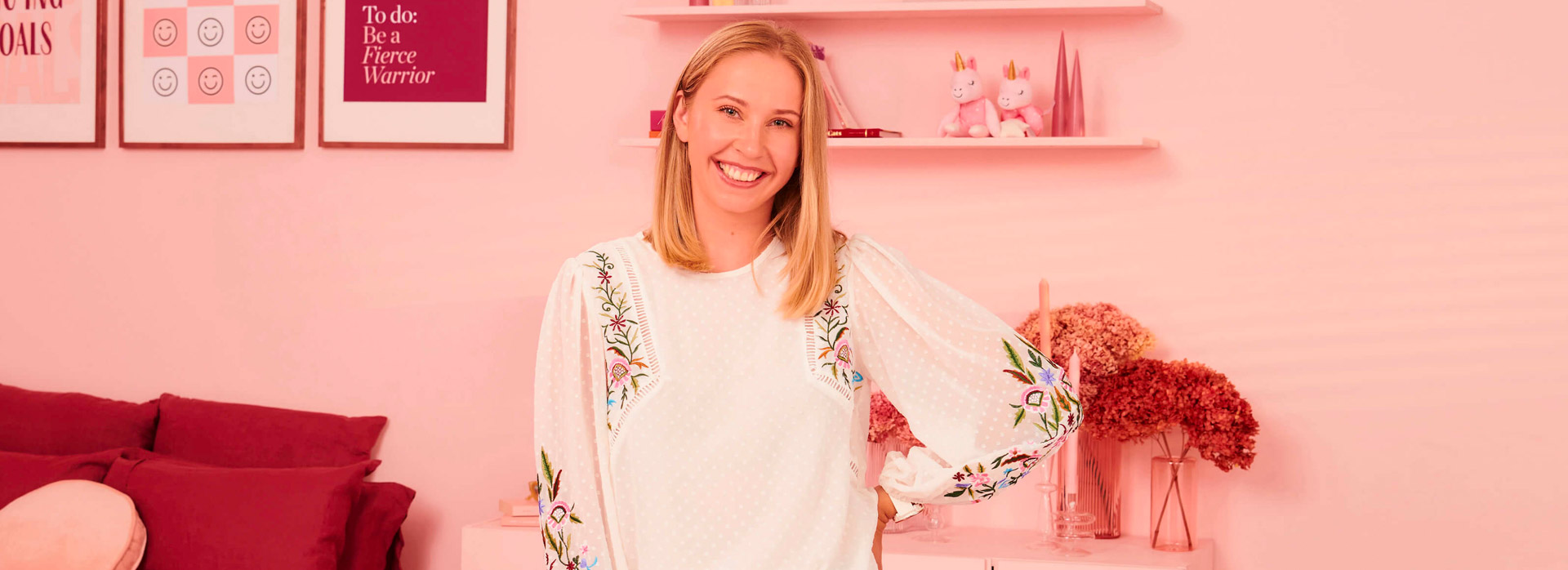
- Blog
- KICBUMP
It’s no secret that as women, our bodies go through some pretty significant changes during pregnancy. Beyond just the physical and outward changes, there’s also a lot happening on the inside of your body both during and after pregnancy.
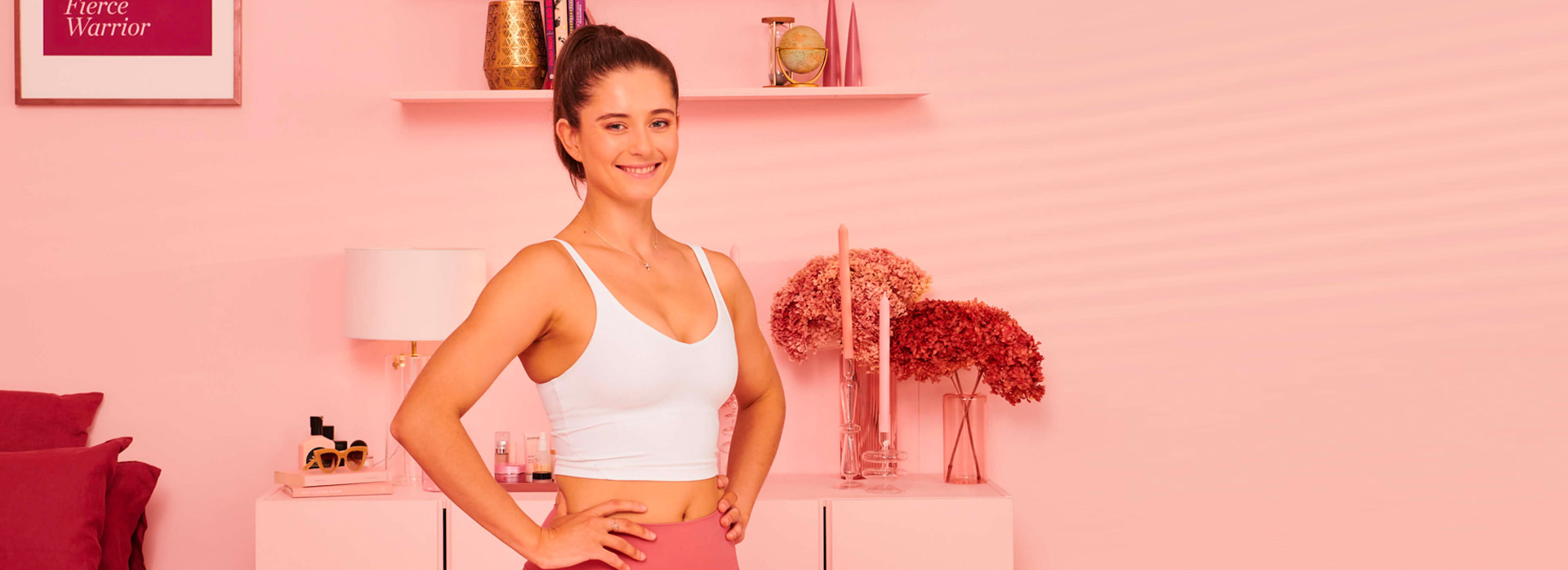
- Blog
- KICBUMP
Postnatal Pilates is a supportive practise to help you reconnect with your body. Our KICBUMP program will help you restore your core and pelvic floor from the deepest muscle layers out, and rebuild your strength from head to toe with graduated supportive movements.
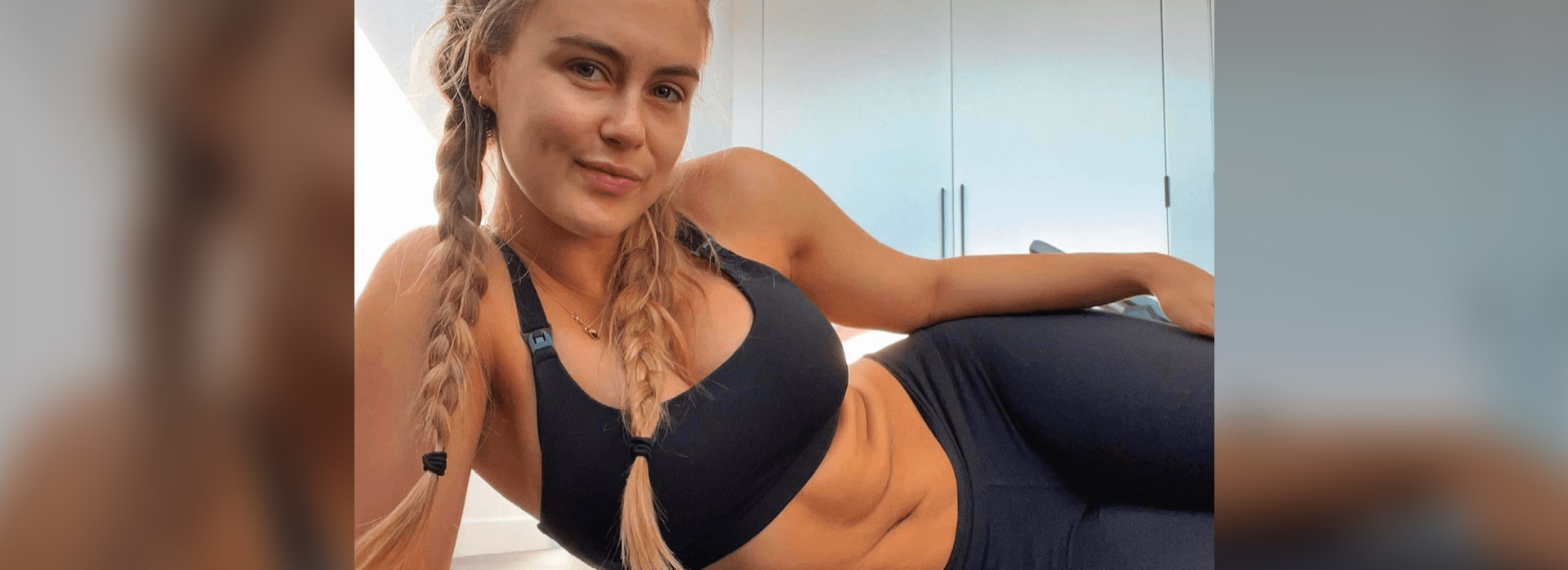
- Blog
- FITNESS
Whether you’re a new postpartum mum like me, need to be more gentle on your joints, are returning to exercise after an injury or your body is simply craving something a little less intense, KIC has you covered! As much as I love getting my sweat on with a super intense HIIT workout, since having […]
